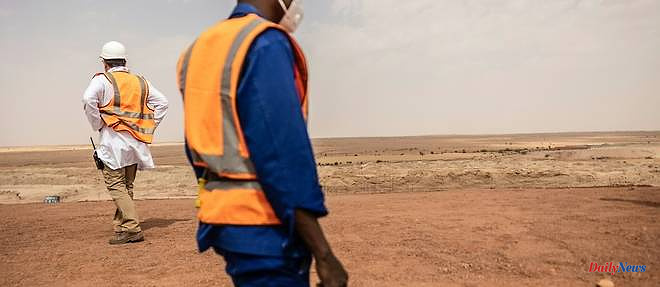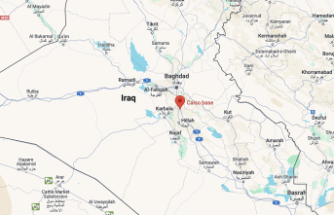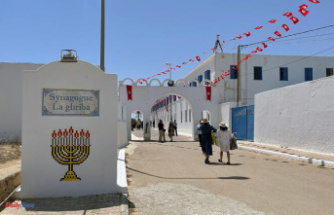Huge hills break the flatness of the desert in northern Niger: far from being natural, they are frightening, because they are made up of millions of tons of partly radioactive waste accumulated over more than 40 years by the uranium mine of Akouta.
The Akouta Mining Company (Cominak), operated from 1978 near Arlit by the French group Areva, now Orano, closed in 2021 due to the depletion of its reserves, after having produced 75,000 tonnes of uranium.
Its redevelopment, at a cost of 150 million euros, is underway and should last ten years, followed by at least five years of environmental monitoring.
Cominak intends to restore at the end of the redevelopment work "a safe, healthy and non-polluting site, in compliance with national standards and international recommendations", said the director general of Cominak, Mahaman Sani Abdoulaye, to French journalists, the first to return to the Arlit site since the kidnapping in 2010 of seven Areva employees, including five French.
The biggest project is to secure the mountains from some 20 million tons of rock waste and ore residues that have been in contact with uranium. They extend over 120 hectares, and reach in places 35 meters high.
Their presence raises fears of serious consequences for the health of former employees and the rest of the local population.
These "radioactive residues stored in the open air next to the old mine" are "the greatest negative legacy left to us by the exploitation of uranium", fulminates Rhamar Ilatoufegh, head of Aghir In'man (shield human, in the Tuareg language), a human rights and environmental protection NGO created in 2000 in Arlit.
A specialized French association, the Commission for Independent Research and Information on Radioactivity (Criirad), believes that waste constitutes "a sword of Damocles for the supply of drinking water".
Conversely, Cominak and the Orano group want to be reassuring.
"We have here natural doses (of radiation) lower than what we can find in other regions in France and in the world", affirms Hélène Sciorella Djibo, responsible for the redevelopment of the site of the company, assuring that it there is no "artificial radioactivity created by man", the most dangerous.
According to Orano, the maximum level of radioactivity in humans recorded at the mine site was 8.6 millisieverts per year in 2022, well below the regulatory threshold of 20 mSv/year for miners in Niger.
"The doses are lower than the standards of Nigerien and international legislation", abounds Gilles Récoché, geologist and director of responsibility, commitment and communication of the group.
Orano adds that the "hills" will be reprofiled and covered with two meters of guaranteed waterproof materials (argillite and sandstone) at the end of the works, and that these are accompanied by control measures in the town of Arlit and its surroundings, where some 200,000 people live.
“An extensive sweep has been set up throughout the city for the monitoring of radioactivity in the air and water”, underlines Mr. Récoché.
But the concern remains. Departmental Director of Arlit Mines, Bassirou Babalé, recalls that the residues "are radioactive" and that it is necessary "to avoid cracks and radon (the gas resulting from the natural disintegration of uranium) floods the city. Tests are underway, he said.
"There is distrust, doubts and fears about radioactivity in our city, it's normal, but measures are being taken to deal with it", replies the mayor of Arlit, Abdourahmane Maouli.
According to Mr. Récoché, "there is no proven case of illness linked to radioactivity" in the Arlit region.
But for Hassan Souley, a former Cominak worker met in Arlit, "people are 7 km from the quarries" and some "are sick". He is not angry: according to him, "everyone is worried" because "Orano is at the root of all these problems there and does not even want to listen to us".
Created in 2012, the Health Observatory of the Agadez region (Osra) has since carried out medical monitoring of retirees and licensees of Cominak and the other mine in the region operated by Orano, the mining company of Aïr (Somaïr), still in operation.
Asked by AFP, Ayouba Dogonyaro, a medical provider at Osra, said that "out of 2,000 consultations, we detected around ten cases of occupational diseases attributable to radiation, blood and lung cancers, silicosis, six of which were recognized by the Osra Medical Committee made up of three doctors representing the mines, civil society and the State".
15/03/2023 08:03:22 - Arlit (Niger) (AFP) - © 2023 AFP












